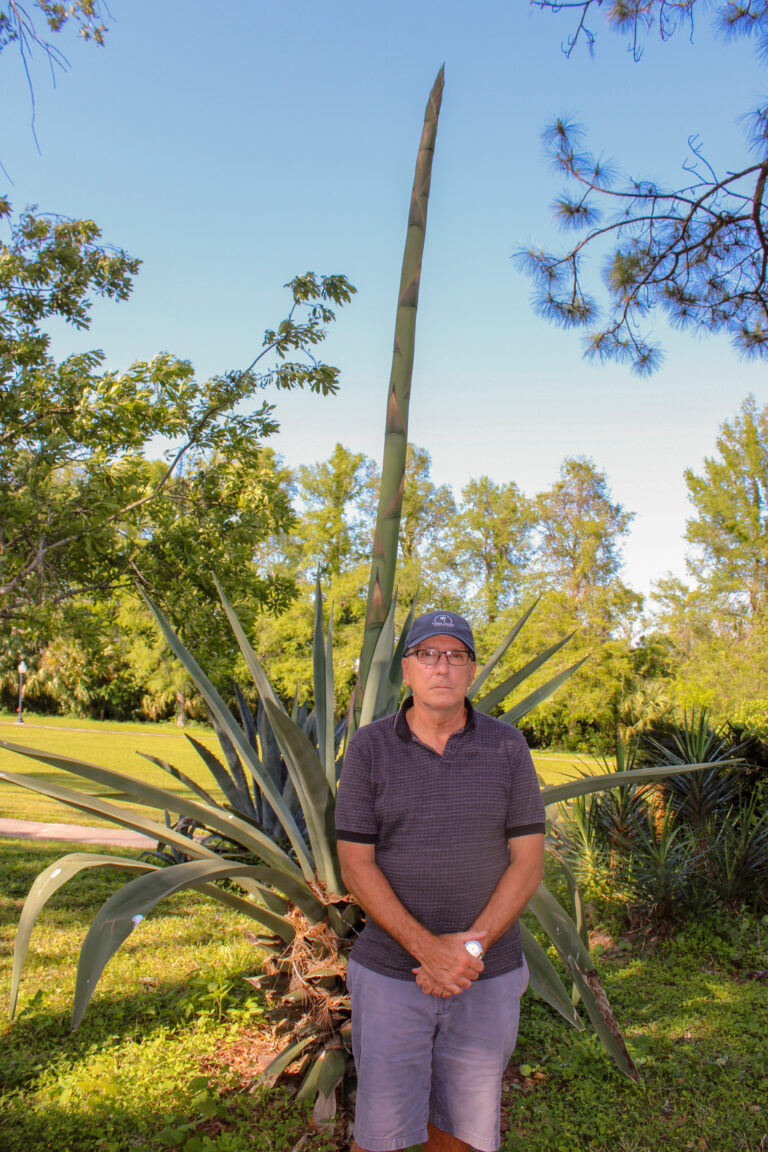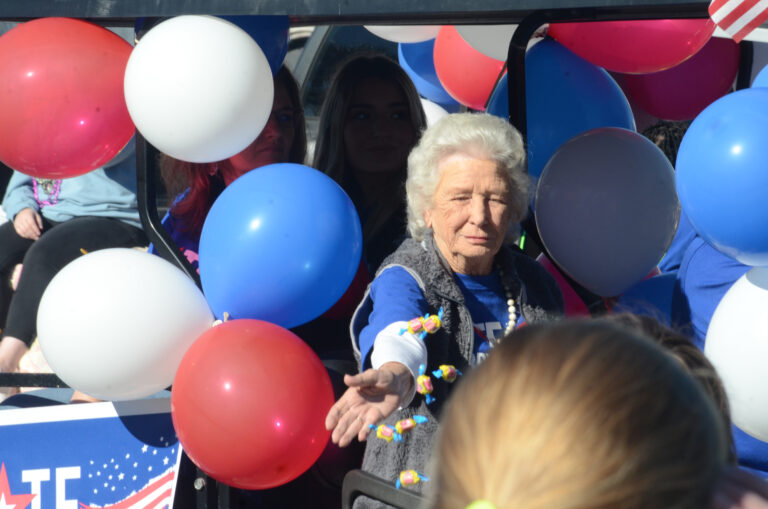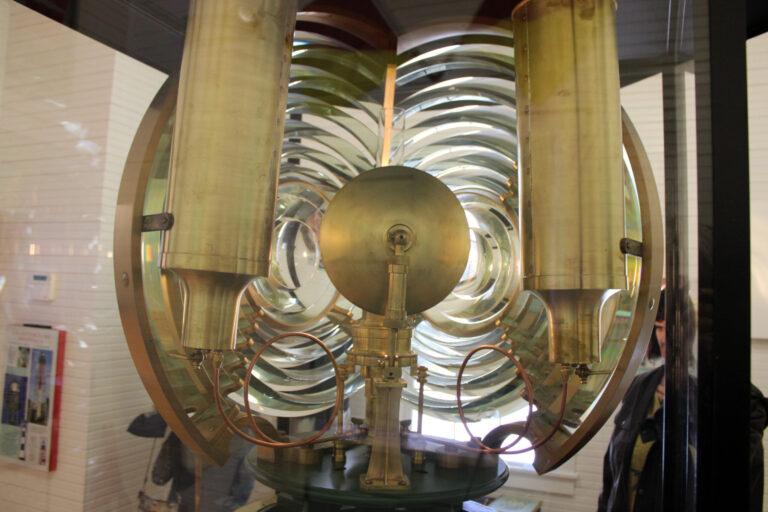Legacy Post Disclaimer
This is a #Legacy post imported from The Apalachicola Time’s previous platform. If you’re experiencing issues with this article, please email us at news@nevespublishing.com.
A healthy Hope returns home
She most likely would have died last October, a victim of red tide.
Beachgoers had spotted the lethargic loggerhead on St. George Island, unable to move, splayed out on the sand.
On Oct. 20, the race to save her life began. The 150-pound turtle was lifted by deputies into a Franklin County Sheriff’s Office truck, which then met a transport vehicle from Panacea’s Gulf Specimen Marine Lab midway between here and there.
“We honestly didn’t think she was going to make it,” said Kylee Lindsey, a marine biologist and member of the marine lab staff.
But on Wednesday afternoon, before a large gathering of cheering onlookers, the loggerhead, nicknamed Hope, crawled energetically into the Gulf of Mexico waters not far from where she had been found, and soon disappeared into the surf.
Three months earlier, with no evidence of a heartbeat, and her flippers flopping lifelessly at her sides, the only evidence of life left in Hope had been some breathing, and blinking of her eyes.[cqmedia layout=”panel” content=”eyJwaG90byI6W10sInZpZGVvIjpbeyJtZWRpYV90eXBlIjoidmlkZW8iLCJwaG90b19pZCI6IjkxMDkiLCJwaG90b19jYXB0aW9uIjoiIiwicGhvdG9fY3JlZGl0IjoiIn1dLCJmaWxlIjpbXX0=”]
The marine lab called in volunteer Crawfordville veterinarian Julie O’Brien, from Shepherd Spring Animal Hospital, to see what could be done.
The suspicion was brevetoxicosis, a condition caused by the turtle ingesting fish and seagrasses that led to a build-up in her system of large concentrations of the red tide dinoflagellate Karenia brevis.
A plasma sample analyzed by Dr. Brian Stacy, an assistant professor in the University of Florida College of Veterinary Medicine, confirmed the diagnosis, that she was on the verge of dying from the neurotoxin.
Treatment called for putting her on vitamin-enhanced intravenous fluids to flush the toxins out of her system, keeping her drydocked so that she would not drown in her comatose condition, encouraging her to eat, and giving her “lots of love and care and time,” said Lindsey.
At first she was unable to eat anything, but Lindsey in time was able to feed her her favorite, scallops (at $20 a bag from the store) and then squid, blue crab, turkey wing clams and other bivalves.
“I could never get her to eat fish,” said Lindsey. “She was a very picky eater.”
On Wednesday afternoon, as she crawled into the water in the awkward way ocean turtles do, she had lots of extra tissue protruding around her neck, a sign of a healthy animal.
“She was a well-fed turtle,” said O’Brien, estimating Hope was a sub-adult, meaning she was older than a juvenile but not yet 35, at the adult stage when she is able to reproduce. If left undisturbed in the wild, loggerheads can live as long as 80 years or more.
“She has a lot of breeding years left,” said the veterinarian.
The lab waited until the Florida Fish and Wildlife Conservation Commission declared the last of red tide gone from the bay, in late December, before scheduling Hope’s release.
Sized up at a yard long, and two feet, eight inches wide, with plenty of barnacles attached to her shell, Hope will likely hang out offshore in the months to come, although about half of the loggerheads in the Gulf of Mexico like to travel down along the eastern shore
She’s one of an estimated 50,000 loggerheads left in the entire world, the dwindling numbers of the endangered species in large part attributable to their being caught as bycatch in fishing gear such as trawls, gillnets, and longlines.
On her will be a pair of silver tags, providing valuable information in the event she is caught.
As well, explained Cypress Rudloe, director of the marine lab, she was implanted with a PIT (Passive Integrated Transponder) tag, which contains an internal microchip that is activated when it passes close to a special antenna. The antenna is connected to a computer that records the identity of the tag and the time that it passed by the antenna.
On hand for the release was Rudloe’s father Jack, dapperly dressed in a sky-blue suit. About to turn 79 next month, Rudloe, a writer, naturalist and environmental activist, founded the marine lab in 1980 with his late wife Anne.






Meet the Editor
David Adlerstein, The Apalachicola Times’ digital editor, started with the news outlet in January 2002 as a reporter.
Prior to then, David Adlerstein began as a newspaperman with a small Boston weekly, after graduating magna cum laude from Brandeis University in Waltham, Massachusetts. He later edited the weekly Bellville Times, and as business reporter for the daily Marion Star, both not far from his hometown of Columbus, Ohio.
In 1995, he moved to South Florida, and worked as a business reporter and editor of Medical Business newspaper. In Jan. 2002, he began with the Apalachicola Times, first as reporter and later as editor, and in Oct. 2020, also began editing the Port St. Joe Star.